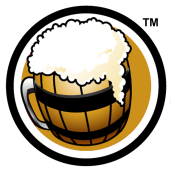Hops
|
Amount
|
Variety
|
Cost
|
Type
|
AA
|
Use
|
Time
|
IBU
|
Bill %
|
|
0.50 oz |
Styrian Goldings0.5 oz Styrian Goldings Hops |
|
Pellet |
5.5 |
Boil
|
60 min |
18.28 |
66.7% |
|
0.25 oz |
Styrian Goldings0.25 oz Styrian Goldings Hops |
|
Pellet |
5.5 |
Boil
|
20 min |
5.54 |
33.3% |
|
0.75 oz
/ $ 0.00
|
Hops Summary
|
Amount
|
Variety
|
Cost
|
IBU
|
Bill %
|
|
0.75 oz |
Styrian Goldings (Pellet) 0.74999999828443 oz Styrian Goldings (Pellet) Hops |
|
23.82 |
100% |
|
0.75 oz
/ $ 0.00
|
Mash Guidelines
|
Amount
|
Description
|
Type
|
Start Temp
|
Target Temp
|
Time
|
|
17.1 qt |
Mash a little higher to keep some sweetness before the blueberry |
Infusion |
-- |
151 °F |
60 min |
Other Ingredients
|
Amount
|
Name
|
Cost
|
Type
|
Use
|
Time
|
|
1.98 lb |
Blueberry
|
|
Other |
Primary |
5 days |
Priming
|
Method: sucrose
Amount: 2.2 oz
Temp: 68 °F
CO2 Level: 2.5 Volumes |
Target Water Profile
New Westminster, British Columbia, Canada 2014
Notes
Mash, lauter, and sparge as usual, then add the candi syrup to your kettle (off the heat), stirring until it dissolves—you might think about doing this between the mash, and the lauter, especially if (like me) you fill to near the top of your kettle (it avoids sloshing wort over the side!). Boil for 60 minutes, chill, aerate, and pitch your yeast. Fermentation is the name of the game here—not surprising in any Belgian beer, but especially true of these dark versions. There’s a lot in this beer that might make it seem sweet, and so we need to make sure that it ferments out nice and dry. Leave too much body and sugar behind, and that, plus the alcohol, plus the esters, plus the flavor of burnt sugar, might make it come across as sweet, which is a no-no.
Ferment at 64°F (18°C) to start and increase slowly almost immediately. The goal is to minimize warm alcohols but also to promote complete fermentation and some yeast flavor contributions. From the time I see fermentation activity (usually about 8−12 hours after a healthy dose of oxygen), I start increasing the temperature by 1°F (1−2°C) per day until I hit room temperature. If that’s below 70°F (21°C) as it sometimes is this time of year, I’ll move the carboy to a warm spot and let it free-rise to as high as it can go. The Ardennes is a high-flocculator, and as a result, you want to let it get right to work, finish fermentation, and drop clear.
Carbonate to 2.5 volumes to give an added dry feel, and you’re good to go! The result should be a dry but complex beer that is a beautiful ruby-red, especially after a couple of weeks of chilling after packaging!

Last Updated and Sharing

- Public: Yup, Shared
- Last Updated: 2020-02-16 20:42 UTC
For quick copying and pasting to a text based forum or email.
Click the Download as HTML file button below.
Recipe costs can be adjusted by changing the batch size. They won't be saved but will give you an idea of costs if your final yield was different.
|
Cost $ |
Cost % |
| Fermentables |
$ |
|
Steeping Grains
(Extract Only) |
$ |
|
| Hops |
$ |
|
| Yeast |
$ |
|
| Other |
$ |
|
| Cost Per Barrel |
$ 0.00 |
|
| Cost Per Pint |
$ 0.00 |
|
| Total Cost |
$ 0.00 |
|
Discussion about this recipe:
